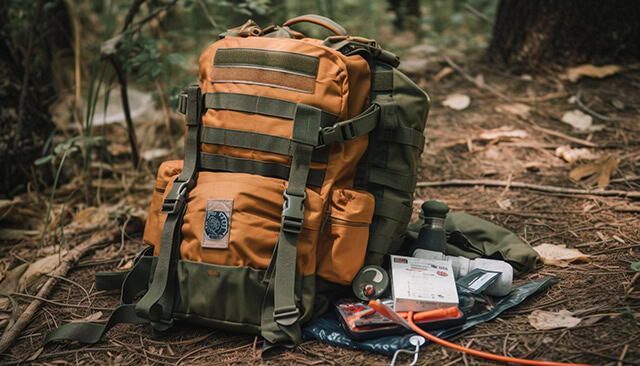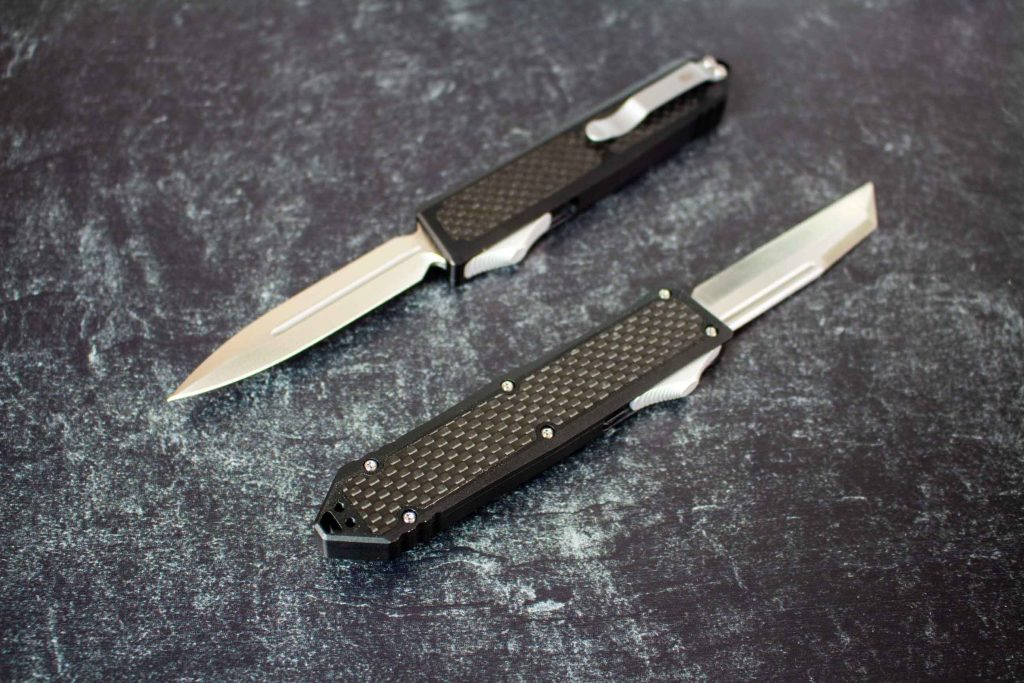Here we are going to discuss some basic survival uses for OTFs. Where enthusiasm for a subject exists, elitism often lurks. No matter if we’re talking about politics, pugilism, novels, or even knives, you will always find some people who think that their opinion is the final word on a subject and virtually gospel truth. It’s among such sections of self-proclaimed knife fans that criticism of OTFs most commonly crops up.
Some like to rail on automatic knives as being unnecessarily flashy and impractical for any task other than using them to impress others when you’re at the mall. In this article, we’ll explain why such sentiments are (to put it mildly) incorrect and see how you can employ an OTF knife in one of the harshest contexts imaginable: a survival situation. Check out a few of the many survival uses for OTFs below!
Why Might You Not Want to Take an OTF Into the Wilderness?

One reason why the ire directed at survival uses for OTFs makes so little sense is that it ignores the tools’ obvious advantages. No matter if you find yourself in an emergency situation, facing a potentially violent situation, or with reduced capability in a limb due to injury or a medical condition, you can have a knife out and open in a flash. However, despite the ease that an OTF affords, the critics have a point. It’s not an ideal option should you find yourself needing to rough it.
Why? There are several reasons. So-called survival knives typically feature a full-tang construction, meaning that the knife’s metal is a single piece that spans from the butt of the handle to the blade’s piercing tip. A full tang grants the knife great stability when put to hard use. By definition, an OTF has a blade and handle made of separate pieces of metal. Also, because OTFs retract, they contain moving parts, which could become fouled by grime or break under strain.
However, we do not always get a chance to choose our preferred tools, and whether you find yourself inadvertently stuck in an extreme scenario or just want to go camping with the blade you already have, take heart. An OTF can still work wonders. Still, you ought to take a few precautions first, such as investing in a water-resistant case and making sure that you regularly maintain your knife.
Survival Uses for OTFs
In the following sections, we’ll explain what tasks you can use an OTF for out in the bush and the situations where you may need to employ them.
Shaving (Creating Tinder, Making a Rope)
Did you know that it’s technically possible to shave with a knife? Technically possible, true, but it’s not a particularly pleasant way to scrape off one’s stubble. Shaving is one of the uses for OTFs. From the challenges of sharpening a field-designed blade to a keen edge to the fact that knives are honed to have different angles than those of razors, shaving oneself with an OTF isn’t entirely practical.
However, there are other shaving uses to which one can put an OTF when out in the wilderness. If you want to build a fire, then you’ll need tinder, and shaving off tiny slivers of dry wood is a perfect way to get some. You can also shave long strips of bark if you need to construct an improvised rope.
Chipping (Building a Fire, Building a Shelter)
Similarly, chipping is usually the place of an ax or a heavy blade such as a machete or Bowie knife, but any knife can perform the task when pressed. When using an OTF to chip, one with a single edge will perform better than a double-edged option simply because you can provide extra support by stabilizing it with a thumb across the spine. Note that any kind of knife that isn’t full tang (i.e., folders, OTFs, switchblades) runs a risk of breaking if you chop too enthusiastically.
Outdoorsmen will chop chunks off of boughs to feed a nascent fire. When creating a makeshift lean-to, chipping out divots on tree limbs helps keep the whole structure from collapsing.
Scraping With the Knife’s Spine (Creating Sparks, Smoothing a Branch)
Another of the many uses for OTFs is Scraping. Sometimes, you want to scrape an object, but you don’t want to use the cutting edge of your blade to do so. For example, think about the act of smoothing a branch in order to make an improvised spit or striking flint to create sparks for a fire. Such tasks don’t require you to dull your blade’s edge, and employing its spine is a viable alternative. Naturally, though, this is only an option for single-edged knives.
Drilling (Tapping a Tree, Building a Shelter)
One less considered bushcraft use for a knife is its ability to serve as an improvised drill, and this is a function best served by double-edged OTFs with a dagger-like blade shape. Tip-minimizing shapes such as the Wharncliffe or sheepsfoot will serve little use here. Drilling is as simple as sinking the point of your blade into a piece of wood at a perpendicular angle and spinning it.
Why would you bother to drill with a knife when the depth of the resulting hole will necessarily be limited? Well, you can tap liquid from certain trees in order to survive in the forest. Drilling can also help you build a more stable shelter that will better stand up to the elements.
Striking (Breaking Glass, Self-Defense, Hammering)
Not every survival encounter will involve overcoming the elements. Sometimes you might need to escape from a wrecked car or to deal a non-lethal blow that will discourage a human or animal assailant. Striking with the butt of your OTF may shorten the knife’s lifespan, but it remains an option for breaking windows or serving as an improvised club. You can even employ it as a hammer, although this will almost certainly cause significant damage.
Screwing and Prying (Repairing Manmade Items )
When you’re caught without a toolbox or one of those handy multitools, know that you may be able to work loose a stubborn screw with the tip of a blade and pry open canned goods when you don’t have an opener. Both of these actions carry significant risk of damaging your knife — or yourself should the blade slip. Still, they can work in a pinch.
Stabbing (Self-Defense, Hunting)
Now we get to one of the most common functions of a knife: stabbing. You may not think that an OTF would work well as a hunting implement. However, tie it securely to the end of a sturdy stick, and you have yourself an improvised spear. And if someone or something tries to assault you, an OTF is an ideal weapon that you can deploy and have ready in an instant.
More Survival Uses for OTFs: Cutting (Too Many Uses to List!)
Time (and likely reader patience) would fail us were we to attempt to list all of the survival uses to which we could put an action like cutting. It is the prime use of any knife, after all, and just a few representative tasks include …
- Consuming food
- Sharpening a stick
- Preparing a bandage
- Creating improvised tools
- Clearing away brush
- Filleting fish
- Skinning game
While OTFs aren’t necessarily designed to help you survive, a high-quality automatic knife can still provide invaluable aid when you’re away from civilization, and those are exactly the kinds of knives we provide here at TAKCOM. Browse all of our offerings.
